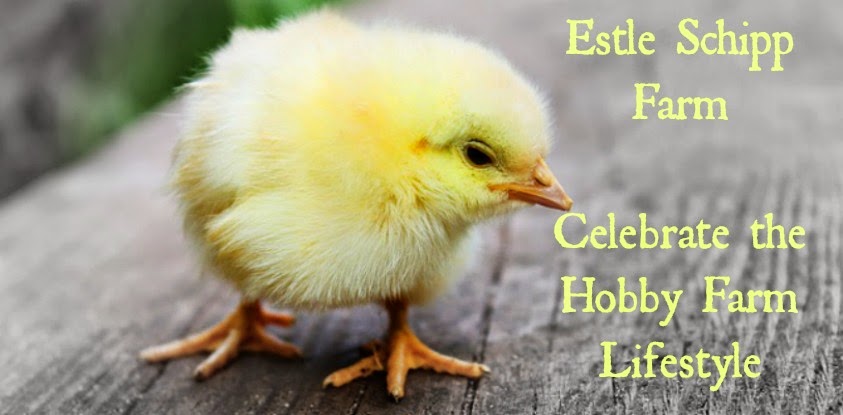All the honey a bee gathers during its lifetime doesn't sweeten its sting.
Italian Proverb
About 6,000 bees made Estle Schipp Farm their new home yesterday! The two packages we ordered were available for pick up and we got them introduced to their new home but not without incident. Yep, both Bob and I received a few little defensive blows from our new residents.
We do quite enjoy being beekeepers but we made a couple of mistakes in this our second year. First, we thought we remembered how to move the bees from the box they arrived in to the hives we prepared for them....Lesson Number 1: no matter how often you have done something, if it is something you do once a year or less, read the instructions before proceeding...
Last year, when our bees arrived, our protective clothing had not even arrived yet. Surprisingly, we had no problems with bee stings in the process that time. So, when Bob asked if I was going to suit up, I said "nope" those bees are much more interested in following that queen than they are in us....Lesson Number 2: If have protective gear, use it...period...no negotiating...
I am amazed with how comfortable I have become with the bees. As a child, I was always quite afraid of them but have grown much more at ease. No longer do I panic when several land on my clothing when tending the hives...except when they get too close to my mouth and nose or get tangled in my hair.....Lesson Number 3: Never panic near the hives - this means slow movements and no swatting! That swatting and panic spreads like wildfire through the hive and you will have a multitude of buzzing warriors chasing you through the yard. Yes, you would have seen Bob and I racing as fast as possible from that bee yard yesterday...LOL...at least it is LOL today, not so much yesterday. Bees will chase you much farther than you think they will.
So, we are wearing our beekeeper badges of honor in the way of a few bee stings a piece. What are some good ways to tend to the wounds? According to WebMD, here are the basics.
- If the person who received the bee sting has trouble breathing, feels faint or dizzy, has hives or a swollen tongue, has nausea or a rapid heartrate: CALL 911 - this is a true emergency!
- If there is not a history of allergy to stings, first remove the stinger by scraping it out of the skin. Do not squeeze since that can put more venom in the wound.
- Treat swelling with ice and elevation. If the sting is on your hand, be sure to take off your rings before swelling begins.
- For pain, use an appropriate over the counter pain reliever like acetaminophen or ibuprofen if you can take them.
- For itching, an antihistamine can help. A paste of baking soda and water to the sting can help too.
- Keep the area clean call your physician if you see any signs of infection.
That old Italian proverb might say that the sweetness of the honey doesn't make up for the sting, but with proper care and attention, the sting can be avoided and the honey a wonderful gift from these hard-working, beautiful creatures. I hope beekeeping finds its way to your hobby farm sometime soon!
Peace be with you,
Star Schipp
This post may contain affiliate links which
means if you make a purchase using one of those links, I may receive
compensation at no extra cost to you. It is a great way to support your
favorite hobby farm blogger. Thank you!



